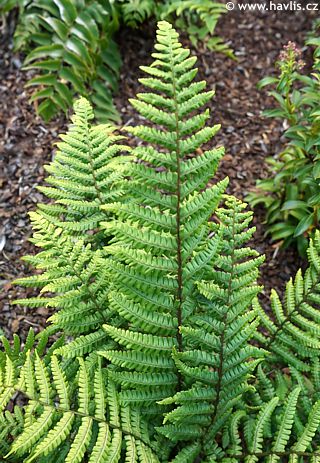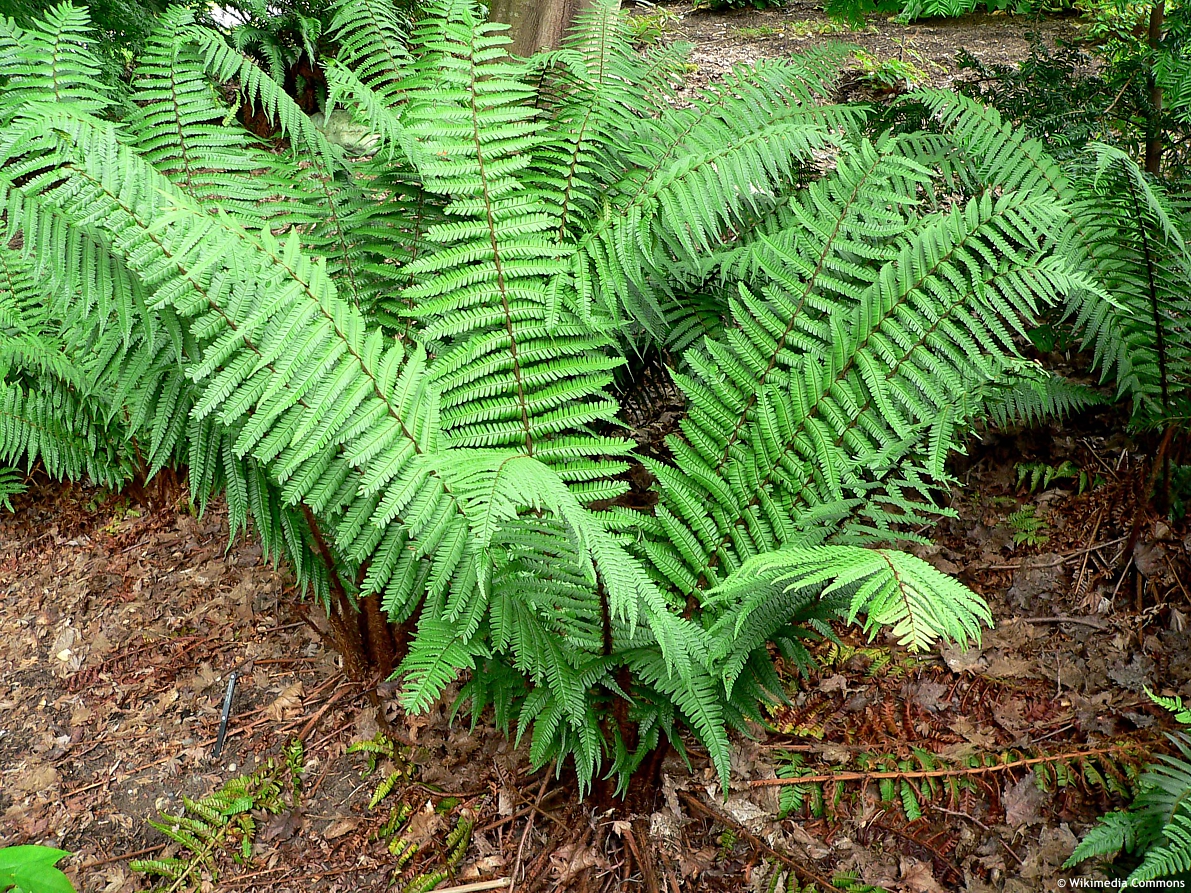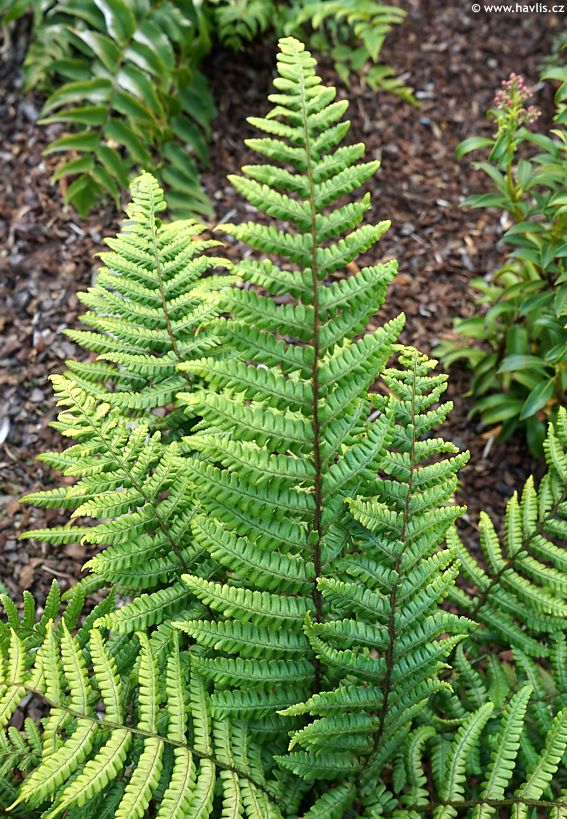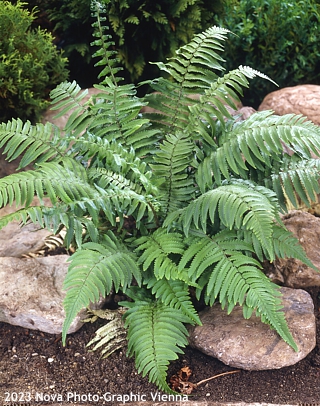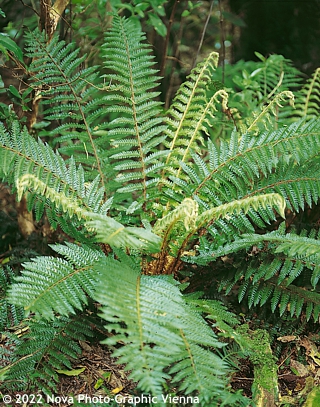Dryopteris wallichiana Alpine wood fern
size/type
mid-sized perennial,tall perennial
usual height
0,6-1,2m
usual width
0,5-1m
leaves
semi-deciduous broadleaf
colour of leaves
location
semi-shade to shade
soil type
any (acidic to alkaline)
soil moisture requirements
evenly moist but well-drained
USDA zone (lowest)
4 (down to -34°C)
winter protection
for zone 5+6

for zone 7

categorized
Description of the plant:
Alpine wood fern is a semi-evergreen type of fern that is most often found in the higher altitudes of Hawaii, Mexico, Argentina, Jamaica, Indonesia and the Himalayas. It was named after a siginificant botanist of Danish origin Nathaniel Wallich (1786-1854), who – like many others – originally had an entirely different profession: he was a surgeon. But as soon as he arrived in India in 1807, he was immediately enchanted by the beauty and diversity of the flora there, and seven years later he quit his medical practice to become the director of the Indian Museum in Calcutta, the project he initiated and eventually started in 1814. At the same time, he already devotes himself to botany and on his expedictions to Mauritius, Singapore, Nepal, Burma and India he researches and describes so far unknown species and collaborates with the Royal Botanical Garden in Calcutta. The taxa he described are abbreviated by Wall.Alpine wood fern is a robust, semi-evergreen fern with up to one-meter-long fronds of tripinnate leaves. In warm, frost-free climates they can grow even larger. They are bright green and glossy and grow along almost black stems that are reddish brown when they emerge. The foliage is surprisingly delicate compared to the overall robust appearance of the plant. In the landscape, use its size to provide a feeling of a jungle or a rainforest. It is perfectly suited to partial shade where it takes some direct sun but is protected by taller trees casting shade for the rest of the day. The more moisture and nutrients it receives, the taller the fronds will get.
It does not require acidic soil. Just make sure it has good drainage but don’t let it dry out completely. Good mulch is recommended at all times. The leaves are very hardy and withstand about -15 °C for a short period of time without any damage. Still, we recommend cutting them all off in spring to encourage new growths. As a perennial it is fully root-hardy to about -34 °C (USDA zone 4).
Last update: 18-04-2023
QUICK PRICE OVERVIEW
CURRENTLY SOLD OUT
WANT TO TRY A SIMILAR PLANT?












